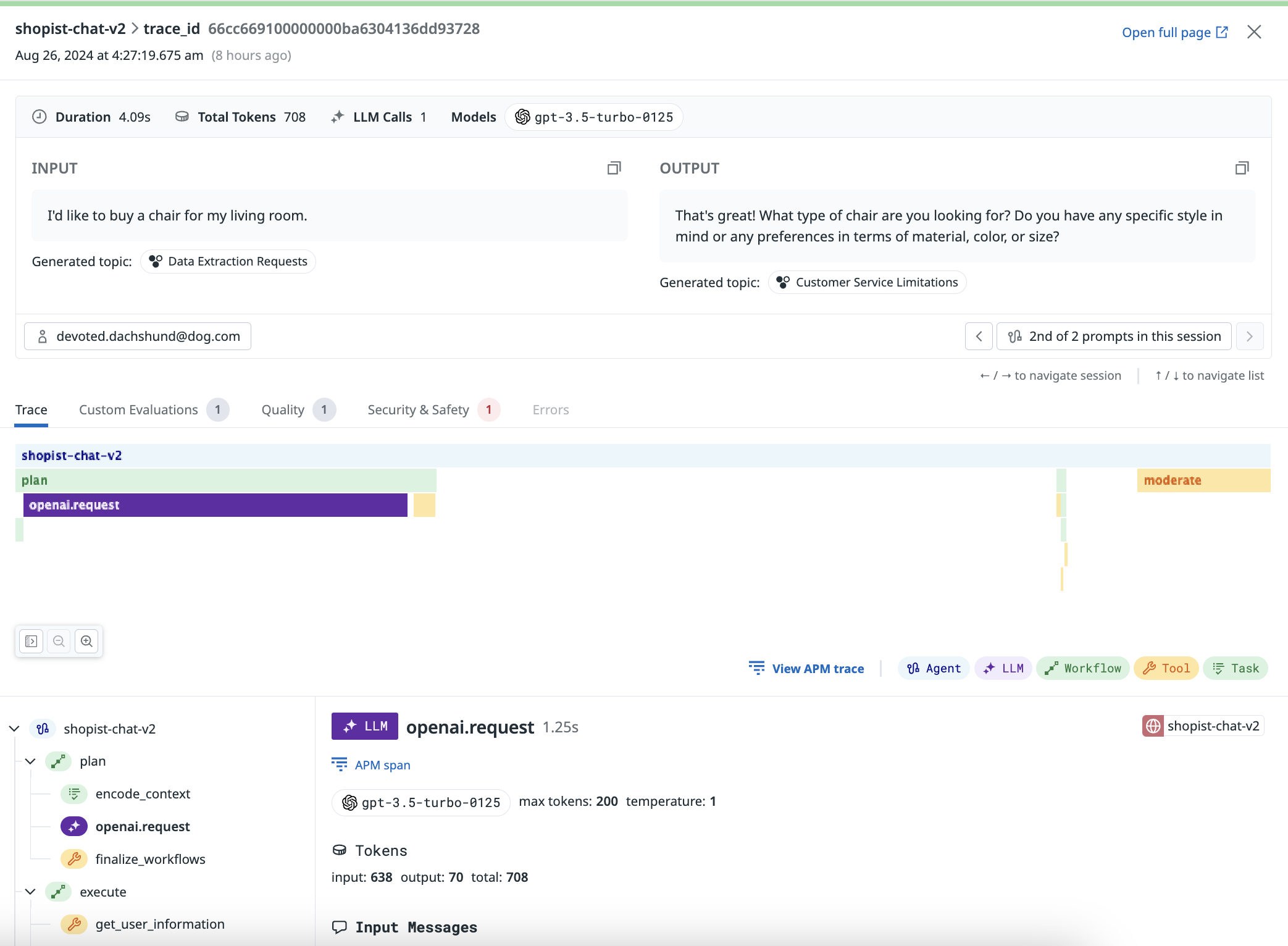- 重要な情報
- はじめに
- Datadog
- Datadog サイト
- DevSecOps
- AWS Lambda のサーバーレス
- エージェント
- インテグレーション
- コンテナ
- ダッシュボード
- アラート設定
- ログ管理
- トレーシング
- プロファイラー
- タグ
- API
- Service Catalog
- Session Replay
- Continuous Testing
- Synthetic モニタリング
- Incident Management
- Database Monitoring
- Cloud Security Management
- Cloud SIEM
- Application Security Management
- Workflow Automation
- CI Visibility
- Test Visibility
- Intelligent Test Runner
- Code Analysis
- Learning Center
- Support
- 用語集
- Standard Attributes
- ガイド
- インテグレーション
- エージェント
- OpenTelemetry
- 開発者
- 認可
- DogStatsD
- カスタムチェック
- インテグレーション
- Create an Agent-based Integration
- Create an API Integration
- Create a Log Pipeline
- Integration Assets Reference
- Build a Marketplace Offering
- Create a Tile
- Create an Integration Dashboard
- Create a Recommended Monitor
- Create a Cloud SIEM Detection Rule
- OAuth for Integrations
- Install Agent Integration Developer Tool
- サービスのチェック
- IDE インテグレーション
- コミュニティ
- ガイド
- API
- モバイルアプリケーション
- CoScreen
- Cloudcraft
- アプリ内
- Service Management
- インフラストラクチャー
- アプリケーションパフォーマンス
- APM
- Continuous Profiler
- データベース モニタリング
- Data Streams Monitoring
- Data Jobs Monitoring
- Digital Experience
- Software Delivery
- CI Visibility (CI/CDの可視化)
- CD Visibility
- Test Visibility
- Intelligent Test Runner
- Code Analysis
- Quality Gates
- DORA Metrics
- セキュリティ
- セキュリティの概要
- Cloud SIEM
- クラウド セキュリティ マネジメント
- Application Security Management
- AI Observability
- ログ管理
- Observability Pipelines(観測データの制御)
- ログ管理
- 管理
Trace An LLM Application
このページは日本語には対応しておりません。随時翻訳に取り組んでいます。翻訳に関してご質問やご意見ございましたら、お気軽にご連絡ください。
LLM Observability is not available in the selected site () at this time.
Overview
This guide uses the LLM Observability SDK for Python. If your application is written in another language, you can create traces by calling the API instead.
Setup
Jupyter notebooks
To better understand LLM Observability terms and concepts, you can explore the examples in the LLM Observability Jupyter Notebooks repository. These notebooks provide a hands-on experience, and allow you to apply these concepts in real time.
Command line
To generate an LLM Observability trace, you can run a Python script.
Prerequisites
- LLM Observability requires a Datadog API key. For more information, see the instructions for creating an API key.
- The following example script uses OpenAI, but you can modify it to use a different provider. To run the script as written, you need:
- An OpenAI API key stored in your environment as
OPENAI_API_KEY. To create one, see Account Setup and Set up your API key in the official OpenAI documentation. - The OpenAI Python library installed. See Setting up Python in the official OpenAI documentation for instructions.
- An OpenAI API key stored in your environment as
Install the SDK by adding the
ddtraceandopenaipackages:pip install ddtrace pip install openaiCreate a Python script and save it as
quickstart.py. This Python script makes a single OpenAI call.quickstart.py
import os from openai import OpenAI oai_client = OpenAI(api_key=os.environ.get("OPENAI_API_KEY")) completion = oai_client.chat.completions.create( model="gpt-3.5-turbo", messages=[ {"role": "system", "content": "You are a helpful customer assistant for a furniture store."}, {"role": "user", "content": "I'd like to buy a chair for my living room."}, ], )Run the Python script with the following shell command. This sends a trace of the OpenAI call to Datadog.
DD_LLMOBS_ENABLED=1 DD_LLMOBS_ML_APP=onboarding-quickstart \ DD_API_KEY=<YOUR_DATADOG_API_KEY> DD_SITE= \ DD_LLMOBS_AGENTLESS_ENABLED=1 ddtrace-run python quickstart.pyFor more information about required environment variables, see the SDK documentation.
Note:
DD_LLMOBS_AGENTLESS_ENABLEDis only required if you do not have the Datadog Agent running. If the Agent is running in your production environment, make sure this environment variable is unset.View the trace of your LLM call on the Traces tab of the LLM Observability page in Datadog.
The trace you see is composed of a single LLM span. The ddtrace-run command automatically traces your LLM calls from Datadog’s list of supported integrations.
If your application consists of more elaborate prompting or complex chains or workflows involving LLMs, you can trace it using the Setup documentation and the SDK documentation.
Further Reading
お役に立つドキュメント、リンクや記事:

